
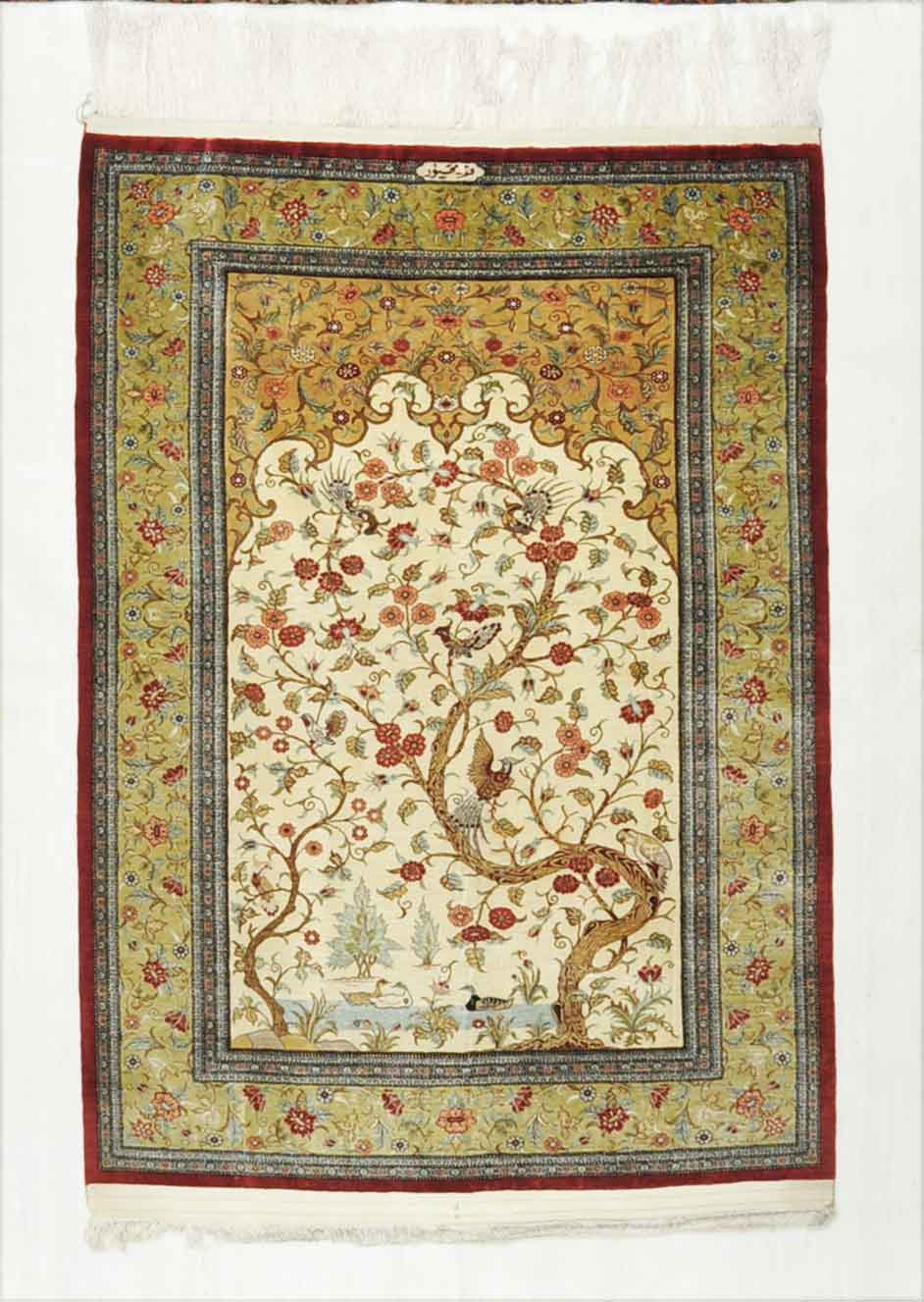
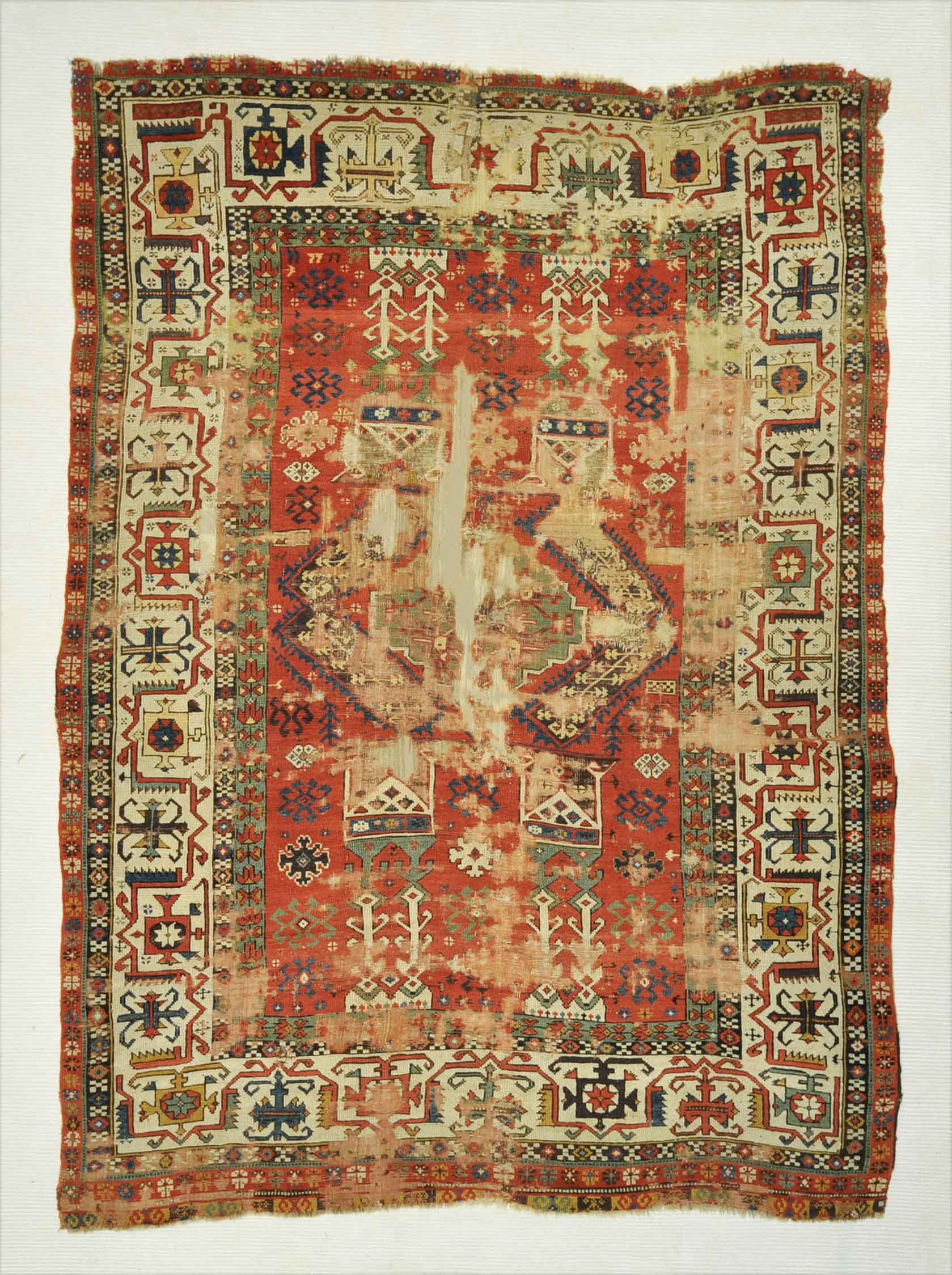
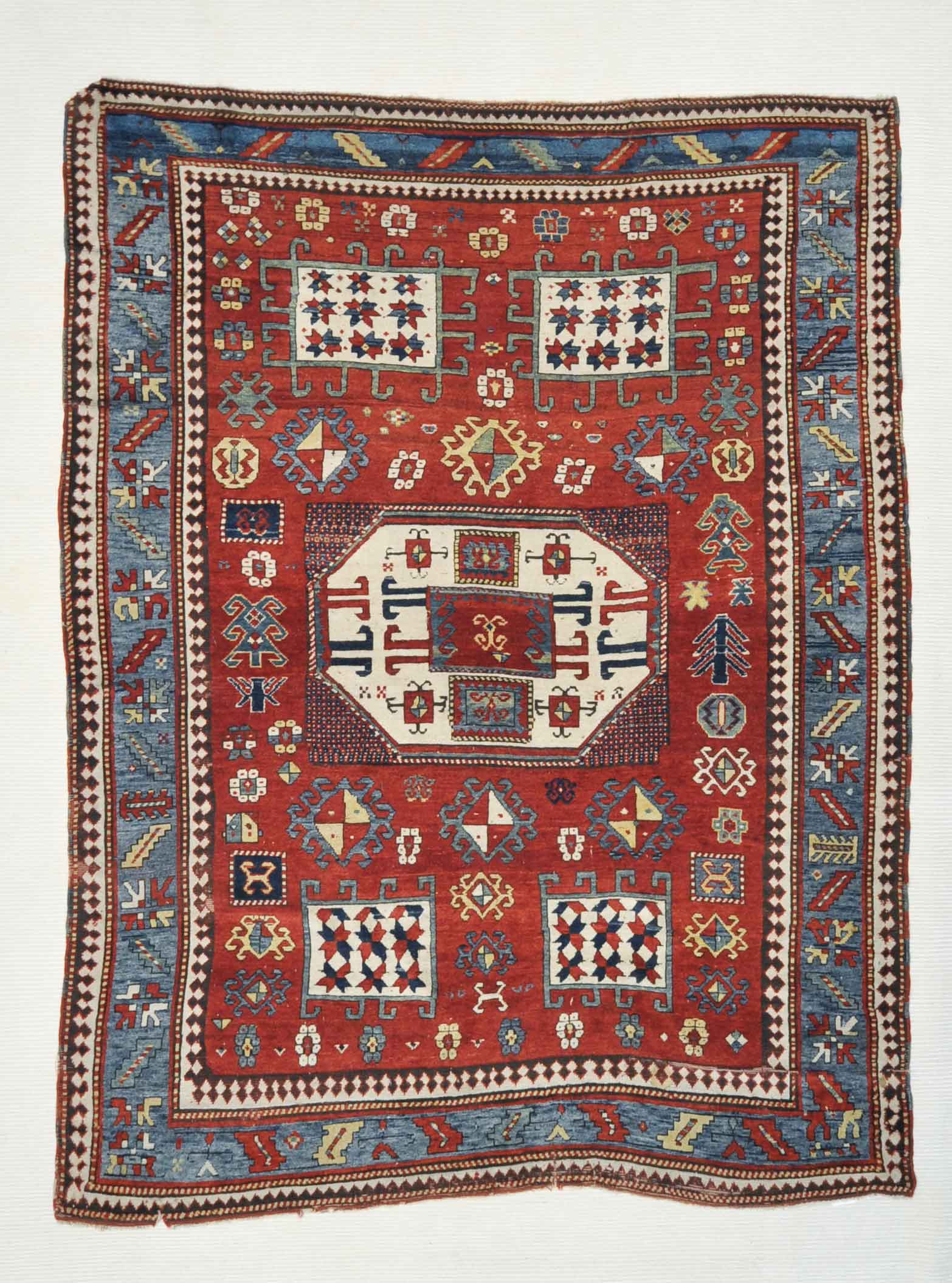

This magnificent Antique Mujur Prayer was made over 200 years ago by most talented weaver with a keen eye on coloration. She wove this rug all by hand from the yarn, she carded, spun, and dyed with natural dyes from her surrounding areas. It is woven upside down, which adds to difficulty of weaving it , but since it was gift to be used as a prayer mat, it was woven them upside down. very few have been made this way and the surviving pieces are rare as they have been used on the floor. An authentic woven art from our private Kourosh collection.
4’2 x 5’10

The wool used to make Sarab camel hair runners are known worldwide for their durability and color. With a quality that out-stands many others, this rug is one of a kind. The Sarab’s natural dyes add vibrant depth and luster. This rug can withstand several generations of heavy use.
3’1 x 13’3
Heriz rugs are one of the most famous rugs from Iran, because of their very unique and distinguishable style.
6’11” x 9’6″

Extremely Fine Rare Antique Shahsavan Silk Jajim featuring a stipe pattered with multi colors. Very Fine Silk Jajim
Size: 5’3 x 7’4
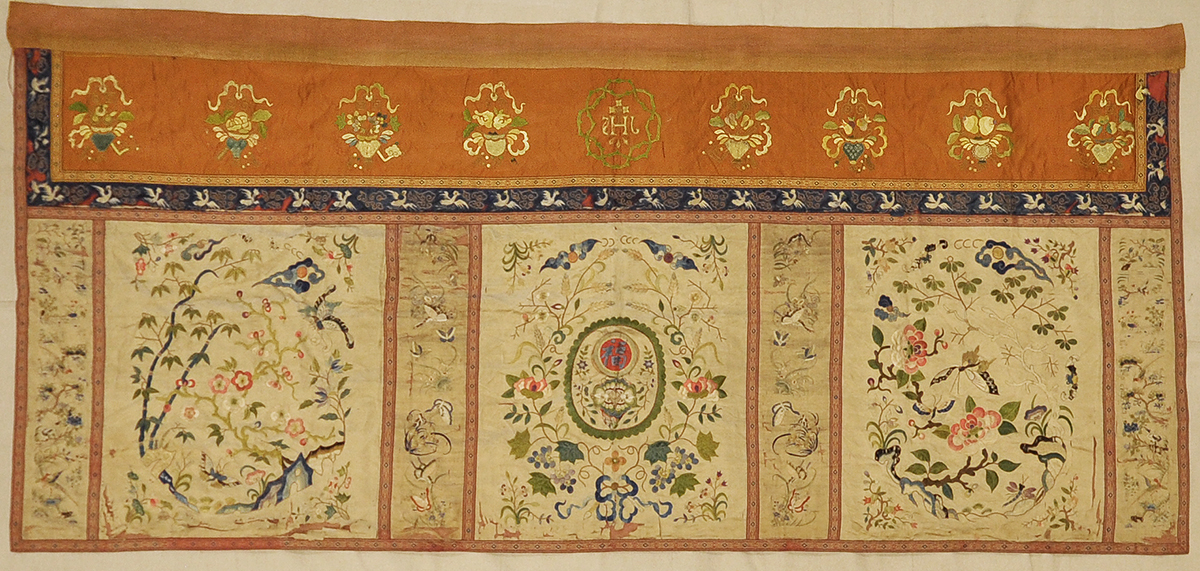
Rare Chinese Silk Textile features beautiful embroidery . Hand embroidered with silk. With hidden cross and unique birds and butterflies
size: 3’2 x 7’1
Mughal – Weaving these type of needleworks was one of the most outstanding aspects of textile production in India under the Mughal dynasty from the late sixteenth to early eighteenth centuries.
Amazing world class wovenart
Worth the visit to the Design Center
Size: 3’2 x 3’4
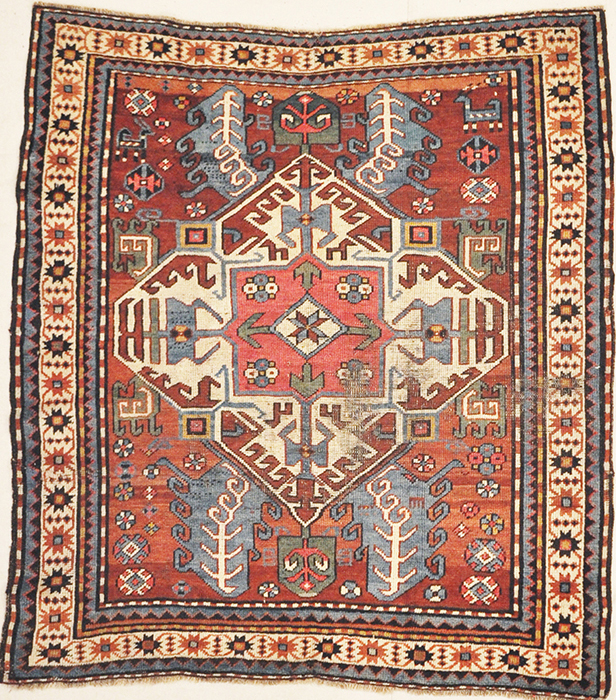
Circa 1900 this Eagle Kazak is one of a kind with lions hidden in the motif and crabs crawling along the border. Play a game of I- spy and see what else you can find among the flowers and shapes. Notice the rare color of green splashed here and there and the shape of goddess Anatolia, the mother of birth on the top and bottom.
4×4.3
This rare, antique Mushwani saddle bag is among the most finely woven of Afghan Baluchis. Frequently these beautiful rare antique bags show rows of pile weave. Mushwani rugs may be the darkest pile woven rugs made. As shown here these particular saddlebags often combine black, dark brown and dark blue
2 x 5
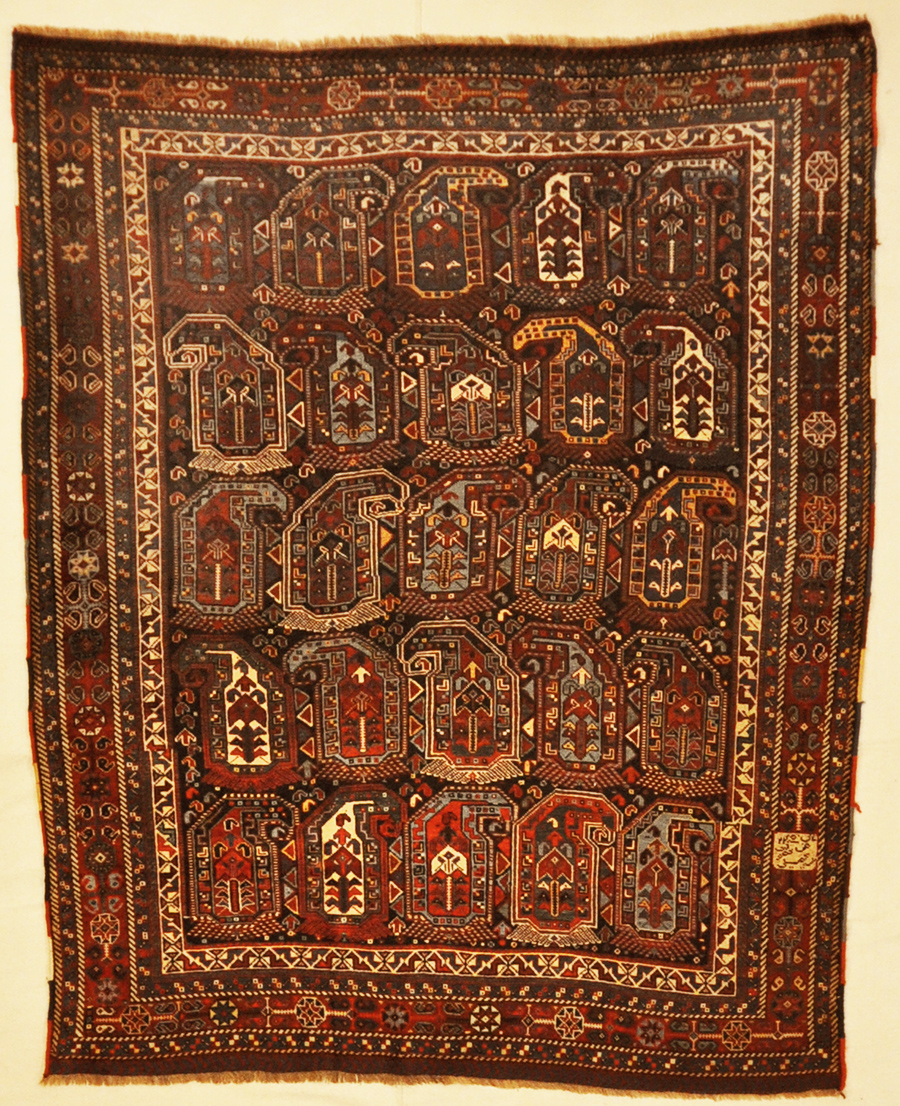
This Antique Khamseh is predominantly woven by weavers who speak Persian Azeri and Arabic. Khamseh rugs tend to be most like their Qashqai neighbors in construction.
5’3 x 6’7
Pashmina shawls are of the highest quality made from the pashmina goat from Kashmir, India. Its fleece has been used for thousands of years to make the highest quality of shawls called pashminas.
6’1″ x 6’1″
Shirvan rugs have a formality along with stylistic complexity that is found in few rugs from the Caucasus. Baku Caucasian rugs from Azerbaijan are known for their luscious softness of hand dyed natural wool. As well, beautiful intense colors make the geometric patterns on this Antique Caucasian Shirvan Baku Rug pop.
3’3″ x 6’8″
This is an Antique Uzbek Turkestan Wool and Silk Suzani woven in Uzbekistan in the. These finely embroidered Suzani textiles are usually decorated with floral and botteh motifs. This brightly colored small piece would go well in a range of rooms.
2′ x 2′
Pashmina shawls are of the highest quality made from the pashmina goat from Kashmir, India. Its fleece has been used for thousands of years to make the highest quality of shawls called pashminas. Cashmere or Kashmir shawls were of a very soft fabric made from the wool of the Cashmere goat. The Kashmir shawl, is undoubtedly the crown jewel of Kashmir’s artistic heritage. It represents the culmination of the ingenuity and talent of a variety of craftsmen, all coming together to create an unparalleled piece of woven fabric and embroidered art. There is no better testament to the prestige associated with the Kashmir shawl than the fact that it was a prized adornment of the Kings and Emperors of India. This Antique Finest 1700s Persian Pashmina Kashmiri Shawl is a beautiful piece in stellar condition for its age.
6’2″ x 6’2″
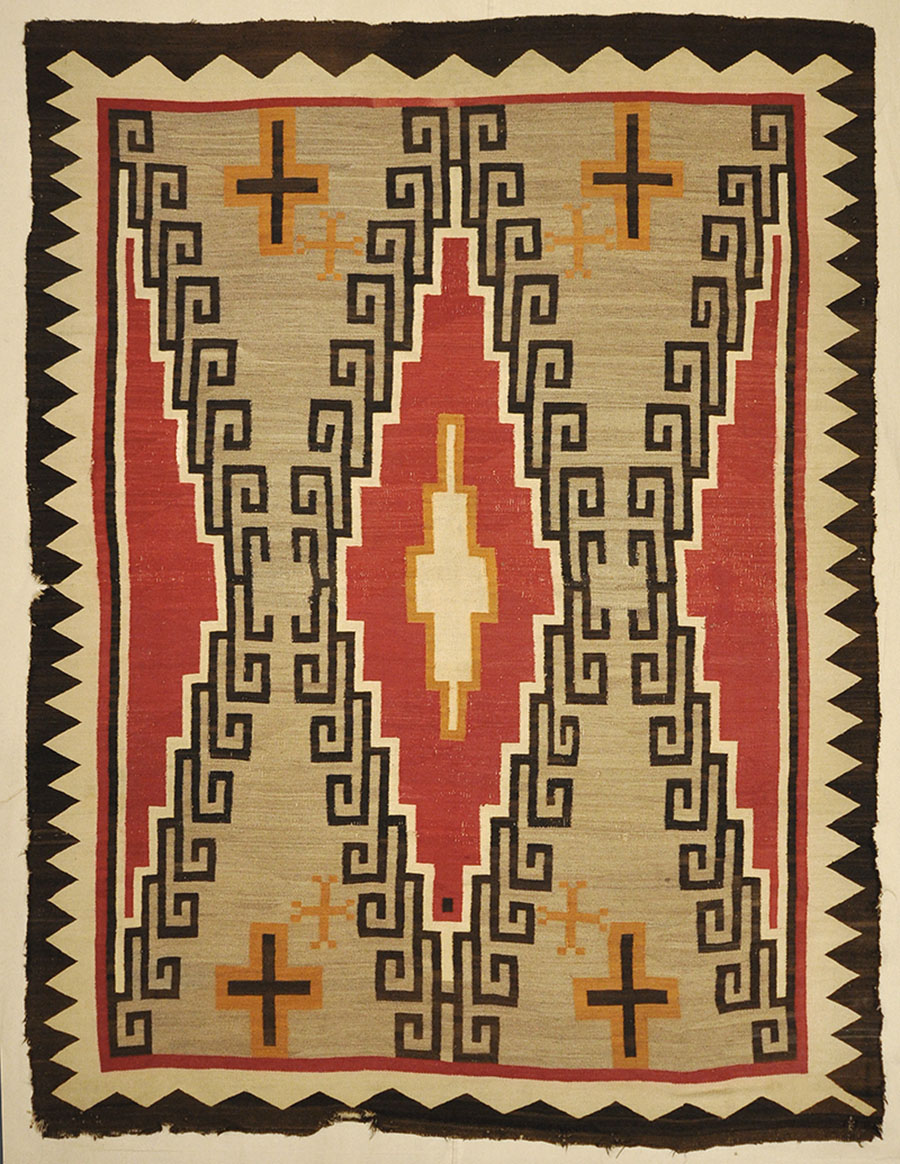
Large Antique Navajo Rug circa 1890-1900 featuring two grey hills in a large format and with an unusual pattern. Handmade in all natural dyes with a very fine weave. Navajos are textiles produced by Navajo people of the Four Corners area of the United States. Navajo textiles are highly regarded and have been sought after as trade items for over 150 years. Navajo textiles were originally utilitarian blankets for use as cloaks, dresses, saddle blankets, and similar purposes. Hand-spun wool from sheep animals was the main source of yarn for Navajo blankets until the 1860s.
6’4″ x 8’4″

5’7″ x 9’5″
We would like to thank the William Morris specialist Linda Perry from The Victoria and Albert Museum, London for identifying the authenticity of this masterwork as one of few surviving carpets woven in the William Morris workshop and designed by John Henry Dearle.
“This directional design William Morris Hammersmith rug with overlying formalized clusters of stylized flowers and leaves including blooming lotus flowers, olive green palm trees, heart shaped stems filled with blue-green leafs and red flowers, various shades of beige, blue, green, cream and russet, on a deep blue ground, the border with olive green and beige palms connected with lotus flower vines, in beige, green and gold, on a russet ground, narrow alternating brown and cream narrow border and a blue outer edge
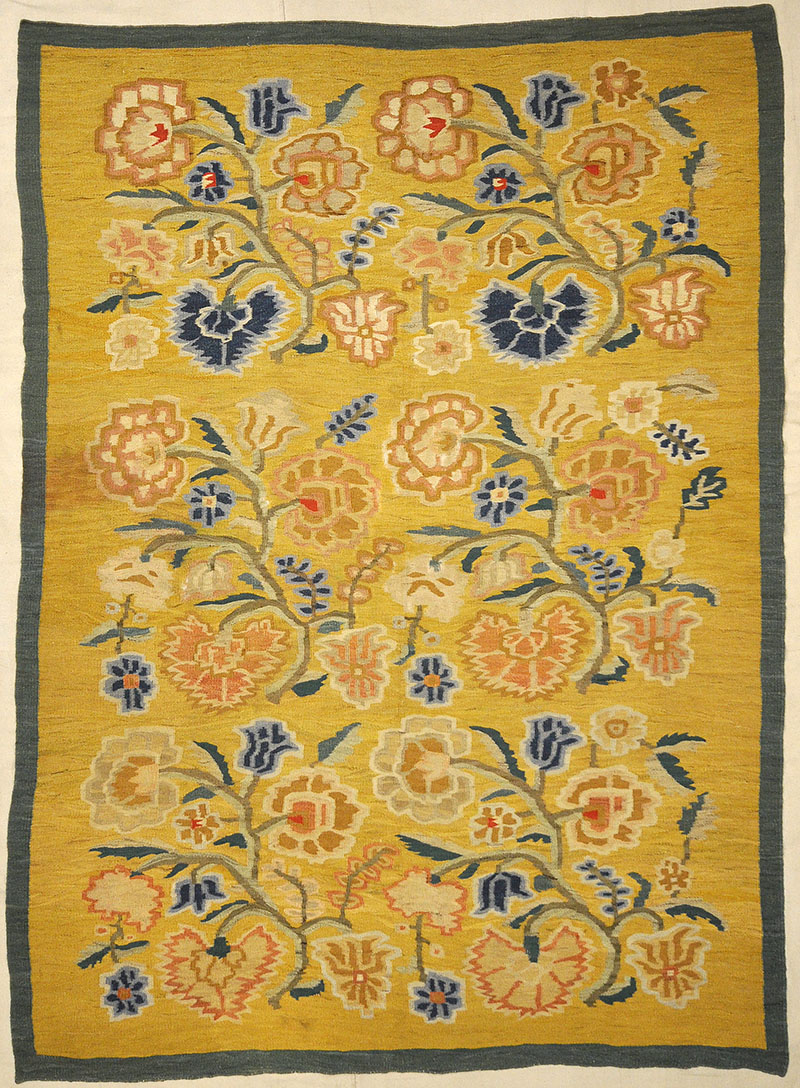
Bessarabian Kelims like this Beautiful Antique Bessarabian Kelim Rug are highly decorative flat woven rugs. Kelim designs are made by interweaving the variously colored wefts and warps, thus creating what is known as a flatweave. Many of the designs are floral patterns made in a naturalistic western style utilizing brown or black ground. The bold and luxurious floral patterns are guaranteed to make a statement in a room.
5’11” x 8’4″
Beluch rugs can be primarily recognized by their exceptional wool quality and color combination. As well as high quality workmanship. The Beluch people are mainly Persian speaking tribes that inhabit the Eastern regions of Iran, Southern Pakistan and West Afghanistan. This piece of woven carpet art is a Unique Colorful Circa 1890s Beluch.
3’2″ x 5’10”
“Jaf” refers to a tribe who speak the Jaf dialect of Jaffi, and are the largest Kurdish tribe in the Middle East. Jaf Kurdish rugs feature an intricate diamond lattice pattern, as seen on this Unique Rare Jaf Kurd Rug Circa 1860s. This particular type of rug is highly sought after because the quality of the older weaving is very high, and has only declined with time, making the old rugs very rare.
2′ x 3’4″
Antique Persian Bakhtiari rugs are among the more intriguing and distinct styles of antique Persian rugs, boasting a fascinating historical heritage and expressing a unique aesthetic ideal.
Size: 4’1″ x 4’7″
As with other southwest tribal groups, the patterns in this Antique Lori South Persian are highly geometric, but tend to be larger in scale. Brilliant colors predominate, and while Lori rugs most often show a tendency toward dark blue backgrounds, this is by no means universal.
5’3″ x 11′
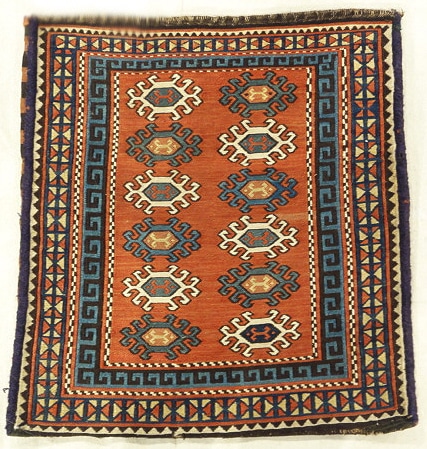
This Rare Antique Caucasian Kuba Soumak Saddle Bag was made for horses, donkeys and camels. The Soumak construction technique produces a flat-weave rug that is thick, strong and exceptionally durable. Antique Soumak rugs are generally very finely woven and feature richly detailed motifs.
1’7″ x 1’9″
The Botteh rug motif is a common element of antique Caucasian rugs. Botteh, or paisley as it is known in the Western world, originated in Persian. The word means bush, shrub, thicket, or bramble. The motif was a major textile pattern in Ancient Persia. Antique Afshar rug common colors include crimson, saffron gold, ivory, burnt orange and sienna.
3’10” x 5′

Saddle bags like this Kurdish Saddle Bag are made for horses, donkeys and camels from Asia Minor, Central Asia, North Africa, the Caucasian Mountains and the Western Hemisphere. Some Kurdish saddle bags are for camel size animals; khorjins from Iran were for donkeys.
2′ x 3’7″
Kirsehir is a town in central Turkey where these remarkable rugs, like this Antique Kirsehir Circa 18th Century are made. The color scheme of these rugs is rich and vibrant. Prominent greens and contrasting reds and yellows are often used in Kirsehir rugs.
3’10” x 5’6″
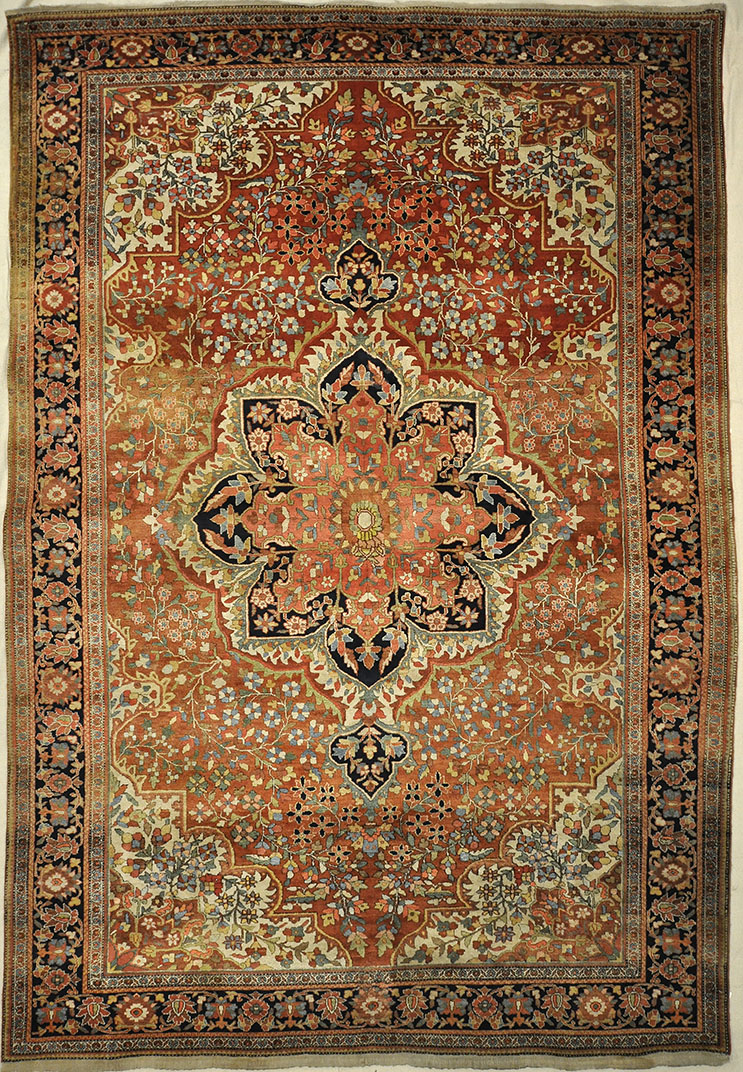
Antique Farahan rugs and carpets that were produced in the Arak region of west central Iran, are remarkable for their ability to combine different qualities and sensibilities. The coloration of Farahan rugs and carpets tend to be rich yet soft, with emphasis on terracotta reds, delicate blues and greens, and pastel apricots and yellows. This piece of woven carpet art is a Rare Antique Fine Farahan Circa 1870.
7’2″ x 10’6″

As with other southwest tribal groups, the patterns in this Antique Lori South Persian are highly geometric, but tend to be larger in scale. Brilliant colors predominate, and while Lori rugs most often show a tendency toward dark blue backgrounds, this is by no means universal.
5’2” x 9’5”
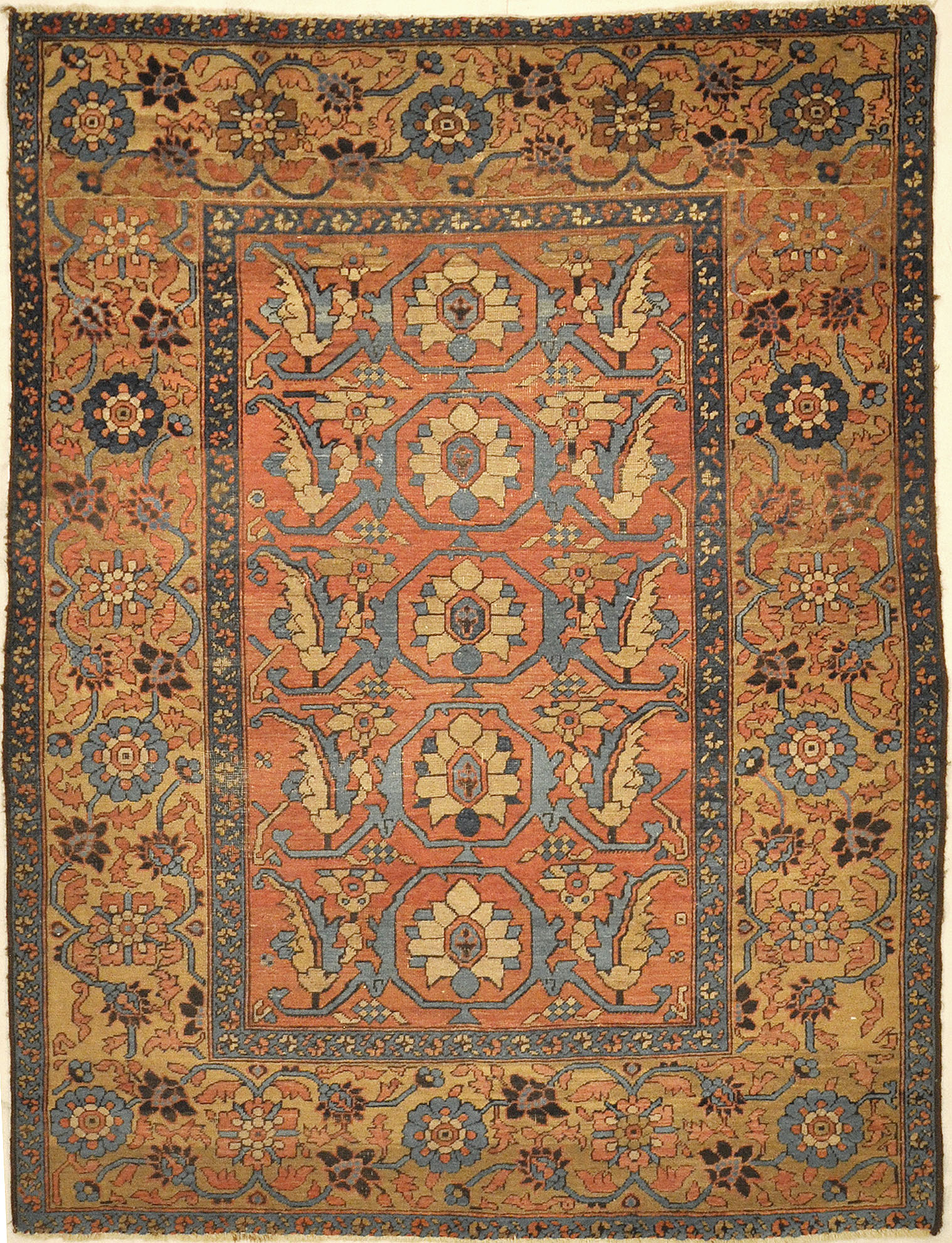
This Antique Bakhshayesh Rug Circa 1880 is a true Persian Bakhshayesh from the northwest tribal nomads. Bakhshayesh rugs are considered among the finest examples of larger rugs from the region. Like Persian classical carpets, these carpets feature bold, geometric designs.
5′ x 6’4″
Carpet weaving was one of the most outstanding aspects of textile production in India under the Mughal dynasty from the late sixteenth to early eighteenth centuries. These rugs feature tropical plants and flowers and a rich palette of deep reds, greens, and yellows.
4 x 5’11”
Antique Persian Bakhtiari rugs are among the more intriguing and distinct styles of antique Persian rugs, boasting a fascinating historical heritage and expressing a unique aesthetic ideal. This beautiful Very Rare and Unusual Antique Bakhtiari Rug is an exemplary Baktiari.
4’4″ x 6′
Antique Turkish Oushak rugs have been woven in Western Turkey since the beginning of the Ottoman period. Historians attributed to them many of the great masterpieces of early Turkish carpet weaving from the fifteenth to the seventeenth centuries.
5’9″ x 8’4″

Antique Sarouk Farahan rugs are among the most luxurious classically derived, room-sized Persian carpets. Hand made of natural wool and dyes. The allover floral garden of paradise design customary on so-called Sarouk-Farahans is classically Persian, as is all the minor detail.
4’3″ x 6’7″
The Fine Antique Qashqai Kashkuli Rug will typically feature dark reds, saffron golds, and rich blues. These jewel tone rug colors were available to the ancient tribes with vegetable-based dyes, and today they are still often incorporated into the design despite the availability of a wider range of dyes.
5’8″ x 10’3″
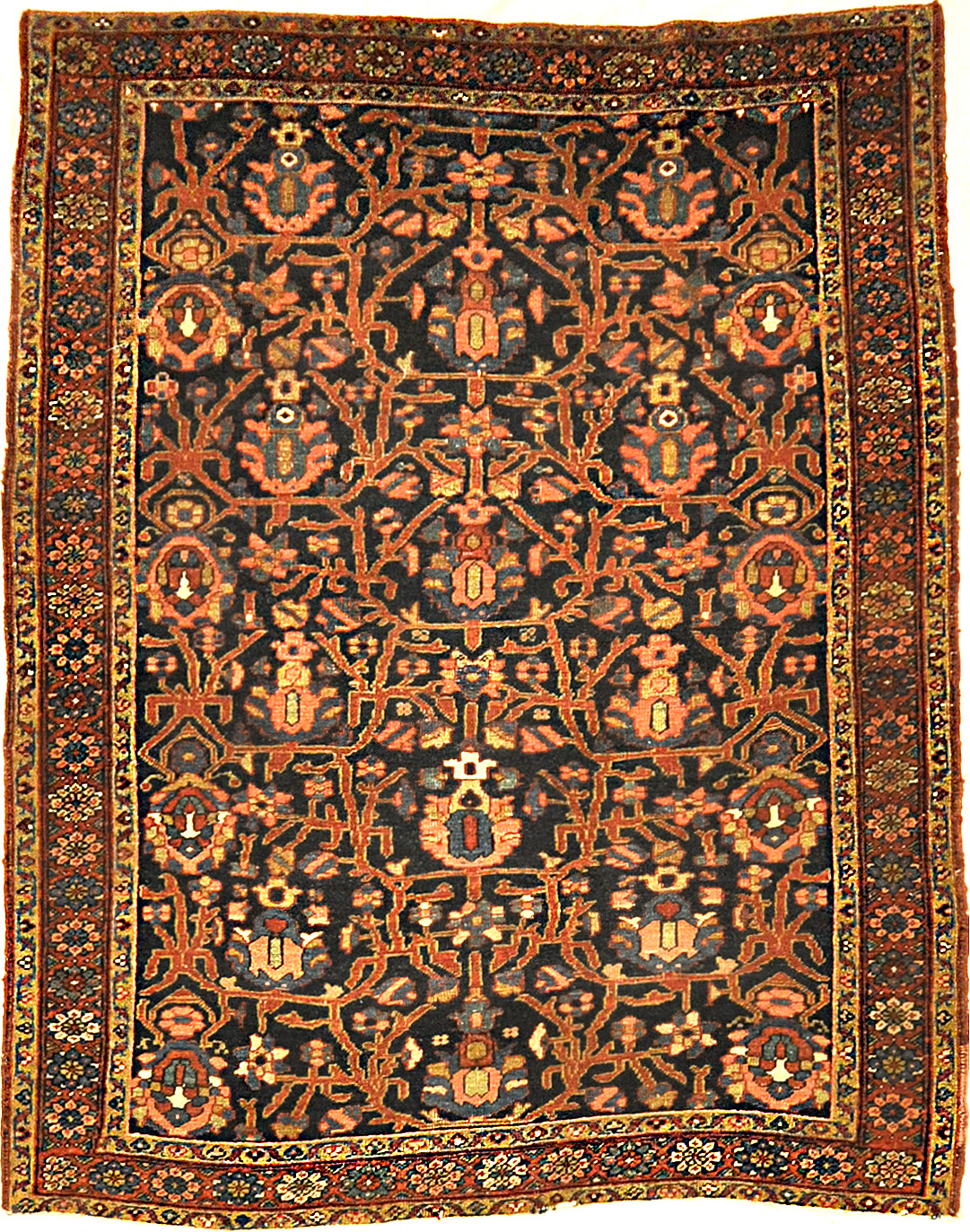
Heriz are produced in the village of the same name in the slopes of Mount Sabalan. Heriz rugs are one of the most famous rugs from Iran, because of their very unique and distinguishable style. Antique Heriz carpets are prized for their elegant patina and rich colors that are often attributed to the area’s copper-rich water. Regal terra-cotta reds, clear Persian blues and creamy accent colors are synonymous with the region’s unmistakable coloration.
4’9″ x 6’2″
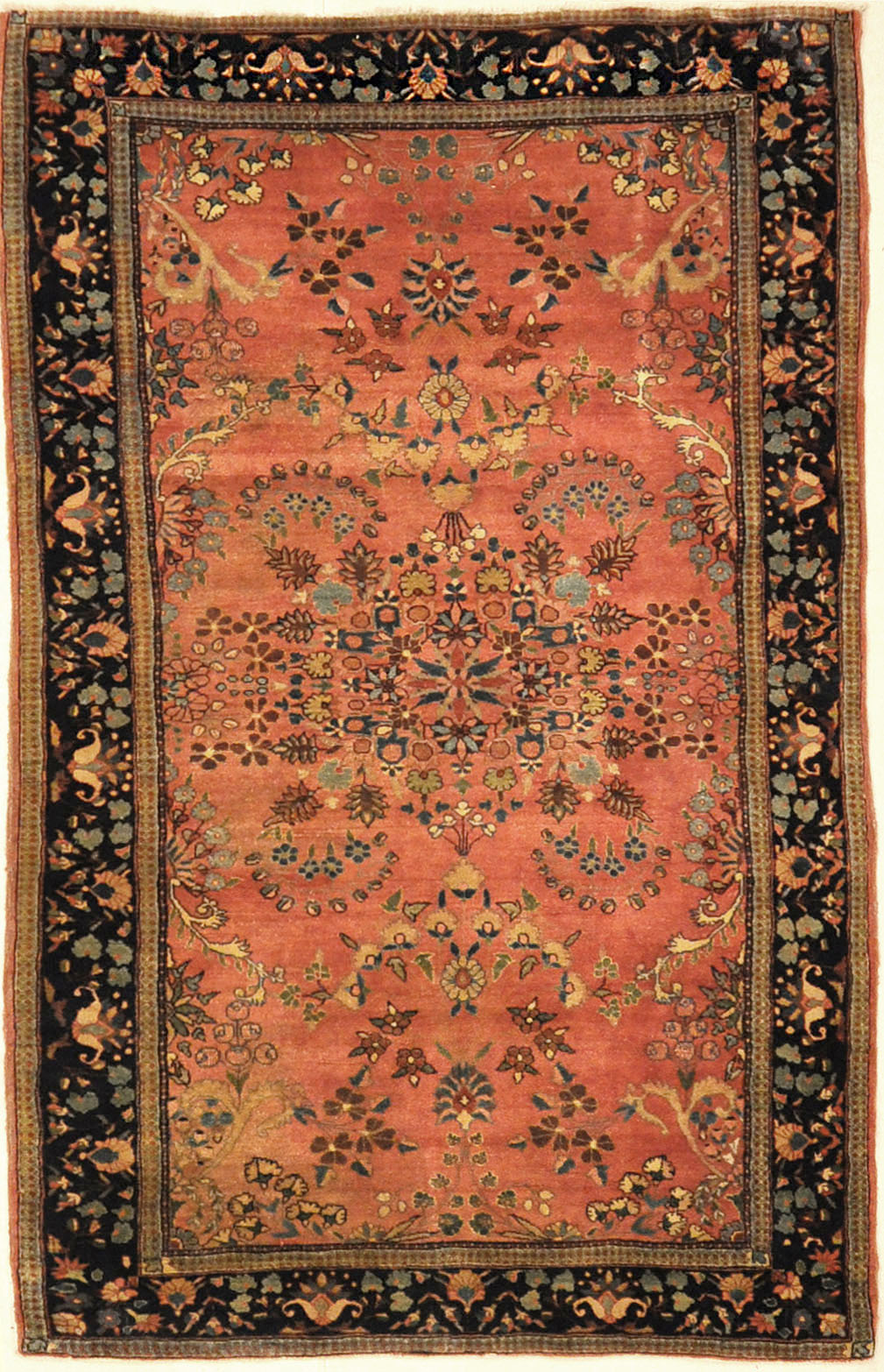
Antique Sarouk Farahan rugs are among the most luxurious classically derived, room-sized Persian carpets. Hand made of natural wool and dyes
4’3 x 6’10

The antique Kazak rug, with their beautiful vegetable dyes and tribal patterns, are among the most prized and exciting Caucasian rugs.
4’4 x 6’7
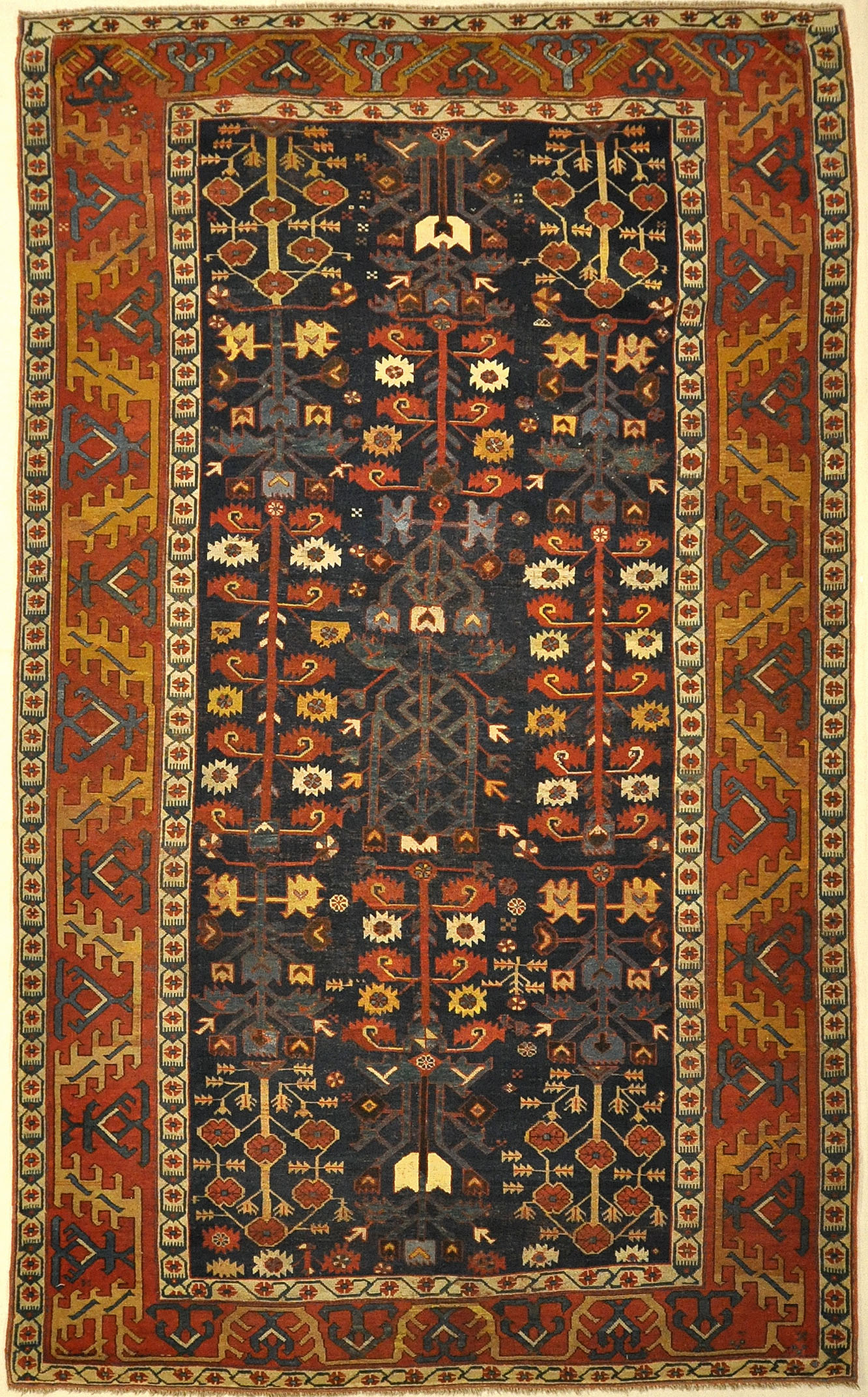
Kurdish rugs like this 17th Century Pre-Proto Kurdish Shrub Carpet are made of lustrous wool and have vivid color. The Kurds of Iran live in a valley where, as the tale tells, Noah’s Ark came to its final rest. These rugs are as diverse as the ethnic weavers who created them.
5’7″ x 9’6″
